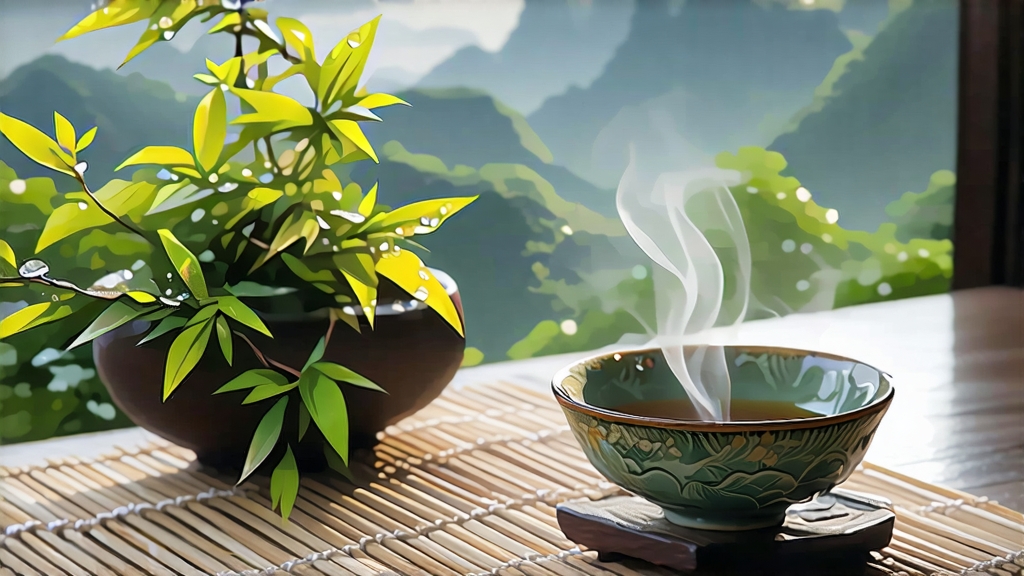
Alishan High-Mountain Oolong is not merely a tea; it is a vertical journey through Taiwan’s cloud forest. Grown between 1,000 and 1,400 m on the ridge that gives the Alishan National Scenic Area its name, this cultivar absorbs 2,000 mm of mist-borne moisture each year, ultraviolet light sharpened by altitude, and diurnal temperature swings that can exceed 15 °C within a single spring day. The result is a liquor that international judges repeatedly describe as “orchid in the nose, glacier water on the tongue, and a finish that rings like a bell.”
History: From Refuge Crop to Luxury Icon
Oolong reached Taiwan’s Chiayi County in the mid-19th century when Fujianese settlers carried Qingxin (TRES #12) cuttings across the strait. Alishan itself remained a frontier forest until the 1970s, when a government reforestation program encouraged farmers to replace slash-and-burn plots with high-value crops under the forest canopy. Tea proved ideal: its shallow roots stabilized slopes, while the evergreen canopy filtered sunlight, creating the shade that slows photosynthesis and concentrates amino acids. By 1985, Alishan oolong had outpriced Tieguanyin at Taipei morning auctions, and by 2005 it was appearing in Michelin-starred restaurants from Paris to San Francisco.
Cultivars: Three Voices of the Same Mountain
Although “Alishan” is often spoken of as a single tea, the mountain actually hosts three distinct cultivars, each shaped by micro-valleys:
- Qingxin Oolong – the original Fujian transplant, prized for lilac aromatics and a creamy body.
- Jinxuan (TRES #12) – bred in 1981 for natural milky notes; thrives at 1,000–1,100 m.
- Cuiyu (TRES #13) – a low-theanine, high-catechin strain that yields a greener, bamboo-leaf profile; planted above 1,300 m where frost risk discourages Qingxin.
Farmers usually keep each cultivar in separate plots, but small-batch “marriage” lots—where Qingxin and Jinxuan are co-plucked and co-processed—are gaining cult status among Nordic baristas for layered textures impossible to achieve at lower elevations.
Craft: The Rhythm of Withering, Shaking, and Fire
Pickings begin at dawn on the 22nd day after the Qingming festival, when two leaves and a bud still wear night-time dew. Leaves are solar-withered for 30–45 min on bamboo trays, then moved indoors for 6–8 h of cool withering at 22 °C. The critical “shaking” (yaoqing) follows: 12–18 short tosses in a waist-high bamboo drum, each 3 min long, bruising leaf edges just enough to invite oxidation while veins remain green. Oxidation is arrested at 18–22 %—halfway between green and black—by a 280 °C tumble in an electric drum roaster for 3 min. After a 24 h rest, leaves are ball-rolled in canvas pouches under a 15 kg granite pressure stone, a step repeated 25–30 times until pellets resemble tiny dragon eyes. Finally, the tea is charcoal-baked for 6 h at 80 °C using longan wood, whose sweet smoke lingers just beneath the floral top notes.
Terroir: Why Altitude Tastes like Nectar
At 1,200 m, air pressure drops to 880 hPa, lowering the boiling point of water inside leaf cells; this slows enzymatic browning and preserves volatile monoterpene alcohols such as linalool and geraniol—molecules responsible for orchid and honey aromas. Night-time temperatures near 10 °C force the plant to convert stored starches into soluble sugars, creating the “high-mountain sweetness” (gaoshan gan) that survives multiple infusions. Soil is a young andisol derived from weathered volcanic breccia, porous and slightly acidic (pH 4.8–5.2), allowing roots to mine magnesium and zinc that translate into a metallic snap in the finish—what Taiwanese cuppers call “mountain air.”
Grading: How to Read an Alishan Label
Export-grade Alishan is classified by elevation, season, and oxidation level. Look for the purple hologram of the Al